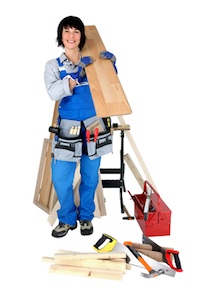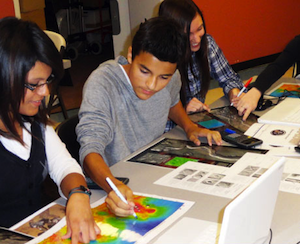You Might Just Be a STEM Teacher If…
You are busy, short on time, and under-resourced?
But wait! That’s the case with most all teachers. So how would I – or anyone else – know if you’re a STEM teacher? What’s the difference between a STEM teacher and other teachers?
I doubt if anyone is going to stop you on the street to ask you that question, but it’s an interesting one nonetheless. Here’s my beginning list of things that might set a STEM teacher apart!
You might be a STEM teacher if . . .
1. Your students clap when you announce they have a problem. Remember what STEM is all about – working together to solve a real-world problem. Kids like doing this. They dive in and fully engage when dealing with the kinds of problems that real scientists and engineers work on. Environmental issues rank among their favorites: they want to rescue, to protect, to make the world a better place. When you announce, “We have a problem,” your students know they are going to get together and work on solving a dilemma that they care about. To your students, your STEM problems provide a challenge and rich, relevant, learning. No wonder they clap!
 2. You shop for school supplies in your local hardware store. The resources you need to support STEM learning go well beyond pencil, paper, and even standard science equipment. You will undoubtedly use some materials like Popsicle sticks, plastic spoons, aluminum foil, etc. But you sometimes use materials such as wooden dowels, electrical wire, fishing line, batteries, wood, PVC pipes and fittings, and other materials your students will need as they design and construct the prototypes that they think might provide solutions. In other words, your classroom supply list raises eyebrows. Really? Six 5-foot sections of guttering and a 20-pound bag of sand?
2. You shop for school supplies in your local hardware store. The resources you need to support STEM learning go well beyond pencil, paper, and even standard science equipment. You will undoubtedly use some materials like Popsicle sticks, plastic spoons, aluminum foil, etc. But you sometimes use materials such as wooden dowels, electrical wire, fishing line, batteries, wood, PVC pipes and fittings, and other materials your students will need as they design and construct the prototypes that they think might provide solutions. In other words, your classroom supply list raises eyebrows. Really? Six 5-foot sections of guttering and a 20-pound bag of sand?
3. Your classroom looks like/sounds like a community forum. In a STEM classroom, silence is not your friend. Your students love to explore, invent, build, figure things out, and be actively engaged from start to finish. Students are learning to work together productively, and that means chatter and sharing. They process their observations and figure out what they mean. They come up with explanations and a bunch of possible solutions. You encourage their engagement by asking open-ended questions with plenty of possible answers. Teamwork and noise are your friends. It indicates your students are engaged and learning.
4. Your students don’t ask you why they need to learn science and math. That’s because when they learn something in science or math, they actually do something with that knowledge. They use science, math, technology, and even the arts to engineer solutions. They learn with understanding. (In math, greater opportunities to apply learning has been significantly correlated with higher performance.)
5. Parents get actively involved in your STEM classes. Scary? Not at all. You’ve probably always wondered how to “really” involve your parents meaningfully in your classroom. As a STEM teacher, your wondering days are over. Each class will have several teams (probably 6 to 8) of students working on a STEM challenge. Parents will be invaluable in helping to monitor teams, keep materials and supplies flowing, and get the room ready for the next class. As a STEM teacher you’ll quickly learn the value of an “all hands on deck” mentality that draws in parents and community members to help with class STEM challenges. (Note: You must have a brief “training” session with parents so that they don’t get engaged in solving the problem themselves.) Stay in touch with your parents and let them know from the beginning . . . “So you want to help at school? Have I got a deal for you!”
6. Business and industry people bow down when they see you coming. Okay, maybe I’m exaggerating a tad here. But if they know that you are a STEM teacher, they probably come close. Our economy is about to be in a real bind and YOU are leading the way in solving that problem. Corporate news has been full of predictions about the possible economic disaster we face with a growing STEM economy and a dearth of STEM workers. Many area businesses that use STEM-related knowledge may encourage their employees to become actively involved in the STEM initiative. You give them a perfect setting for doing so. You provide opportunities to talk with students about STEM fields and the chance to help by mentoring and monitoring.
 7. Your students know it’s okay to fail. Your students are comfortable with failing to succeed the first time they face a STEM challenge. They know they will have an opportunity to analyze and learn from their mistakes, and to try again. You’ve already helped them learn an important principle – there are multiple right approaches to arrive at a solution. In the end, they learn that analyzing their lack of success is a key to designing successful solutions.
7. Your students know it’s okay to fail. Your students are comfortable with failing to succeed the first time they face a STEM challenge. They know they will have an opportunity to analyze and learn from their mistakes, and to try again. You’ve already helped them learn an important principle – there are multiple right approaches to arrive at a solution. In the end, they learn that analyzing their lack of success is a key to designing successful solutions.
8. You use assessments in weird ways. You may use an occasional multiple-choice test, but these are tossed into a potpourri that includes informal assessments, student self-assessments, and performance assessments. You use these to find out what your students understand, including misconceptions and incomplete knowledge, and then you adjust your lessons and approaches to generate greater learning. You’re even starting to feel comfortable in not giving students those tedious recipes and prescriptive rubrics. You assess students’ performance primarily to promote deeper student learning.
9. You spend your spare time growing. What? You don’t have any spare time? You don’t grow houseplants or back-yard vegetables anymore? That’s okay – you still spend time growing. One of the most important things you can do, as a STEM teacher, is to stay current in content knowledge and teaching practices. You grow and learn to diversify your teaching skills. You grow your skills in facilitating (as opposed to dictating) so that students learn how to think like engineers. You grow in your understanding and use of digital tools and technology in your classes – perhaps with help from your students. You do some growing, and in turn your students grow as well.
10. Your classroom door has a “Come on in!” sign on it. You deliberately teach in a public and transparent way. You gladly help other teachers by demonstrating what does and does not work. (Sometimes we learn more from what goes wrong than what goes right.) You open your teaching practice to your colleagues and others. You freely share information and communicate through blogs, wikis, Twitter, and other social media with networks beyond your school. You are comfortable doing all this because you, like your students, know that it’s okay if you don’t always succeed, as long as you keep on trying.
Thank you for being a STEM teacher. And if you’re not a STEM teacher, thank you for either planning to be a STEM teacher, or for supporting STEM teachers!



































Hi Anne – how about when they ask why we DON’T do science or social studies, etc. and you point out the project(s) they are and have worked on and ask them what they were learning when they had to design new animals based on their environment and what they had learned about animal adaptations, or when they had to explain why the can crushed (air pressure) and more and then they say, “Oh, that was science!?” :)
Great post!
Thanks, Brian! I enjoyed writing that one. One thing I wish I’d thought of – suggested by Jeff Goldstein on Twitter – You might NOT be a STEM teacher if you think STEM is a class about plants.
Hope your year shapes up well with your kids and STEM projects . . . can’t wait to hear and see more about the good stuff you’re doing. Stay in touch!
This could also be an article called, “You know you integrate service effectively if…. ” Thanks for the article!
Thanks for your comment Amy! I like the suggestion .
Leaders especially from developing countries urge their youngsters to be technology contributor not only as technology users. STEM emphasize on problem-based learning can sharpen their problem solving process hence nurture students to develop engineering solutions i.e a technology contributor within their level.